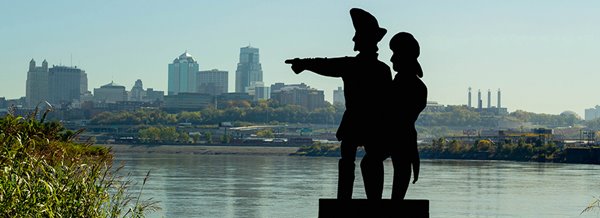 Water Pollution Control (WPC) effectively manages all assets and facilities to meet various state and regulatory requirements, which serve to protect public health and our environment. We treat our wastewater to properly remove 95-99% of wastewater pollutants before returning clean water to the Missouri River.
Water Pollution Control (WPC) effectively manages all assets and facilities to meet various state and regulatory requirements, which serve to protect public health and our environment. We treat our wastewater to properly remove 95-99% of wastewater pollutants before returning clean water to the Missouri River.
Like many communities nationwide, the Unified Government has an aging sewer system that requires continuous maintenance. Older portions of our system function as a combined sewer system, meaning pipes carry both wastewater and stormwater. Learn more about combined and separate sewer systems in the Infrastructure Overview accordion above.
Sewer Investment Program
The Clean Water Act of 1972 provides combined and separate sewer systems regulations. The UG has been working to reduce overflows and better meet those regulations. Most recently, WPC is rolling out its Sewer Investment Program. The Program was created from an agreement (a Consent Decree) with the Environmental Protection Agency to outline specific improvement projects. The Program spans 25 years and requires a total investment of approximately $900 million. This investment will provide you with more efficient, reliable, and sustainable sewer infrastructure, meet Clean Water Act regulatory requirements, and, most importantly, meet the needs of our community at a reasonable cost to ratepayers.
Before reaching our current consent decree with the EPA, the UG worked under a partial consent decree to make improvements at the Kaw Point Wastewater Treatment Plant. Improvements included biosolids dewatering to meet air quality regulations and the construction of a UV disinfection facility to reduce effluent bacteria concentrations into the Missouri River.
Stormwater Runoff
Our stormwater runoff picks up pollutants such as trash, debris, pesticides, oils, and dirt that can harm our waterways. The National Pollutant Discharge Elimination System (NPDES) stormwater program regulates some stormwater discharges from three potential sources:
- Municipal separate storm systems (MS4s)
- Construction activities
- Industrial activities
The Unified Government of Wyandotte County and Kansas City, Kansas, must obtain an NPDES permit before discharging stormwater to local waterways. The MS4 permit requires the Unified Government to report the status of compliance with permit conditions, assess the appropriateness of UG’s best management practices, and explain progress toward achieving measurable goals for each of the six minimum control measures. Our MS4 permit is regulated by the Kansas Department of Health and Environment (KDHE). Additionally, we have a Stormwater Management Plan (SMP) regulated by the EPA and KDHE. The SMP includes public outreach, construction site runoff control, industrial activity management, and a wet weather monitoring program.
Learn More About Stormwater